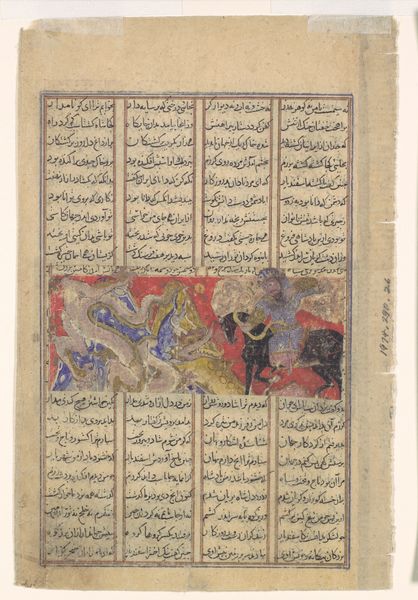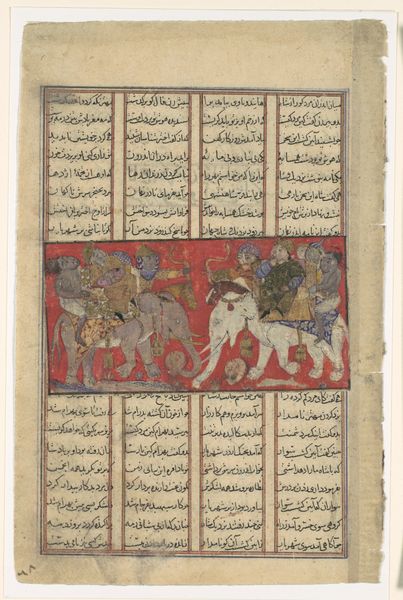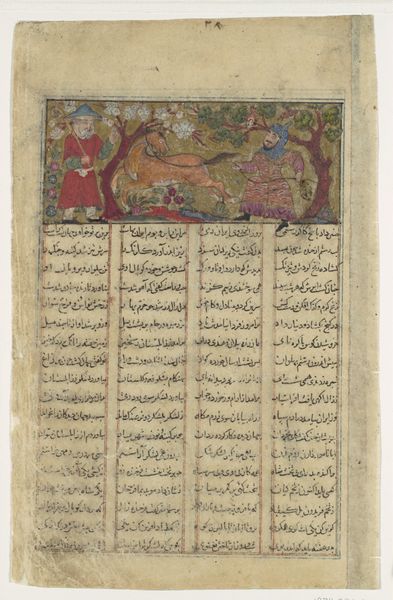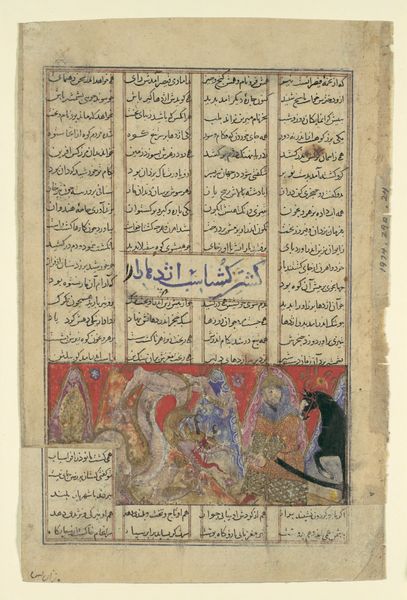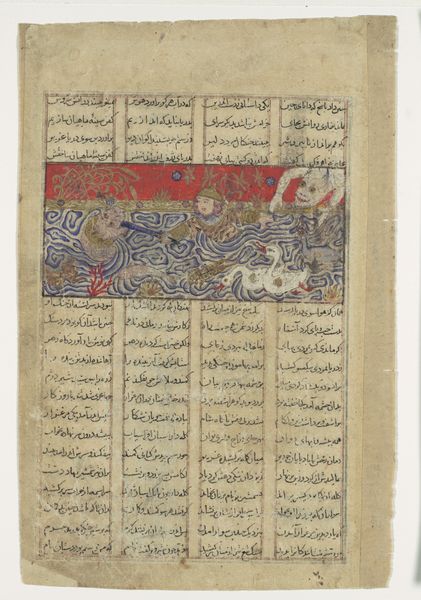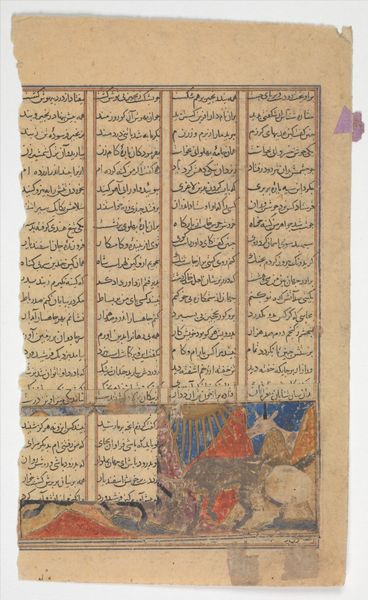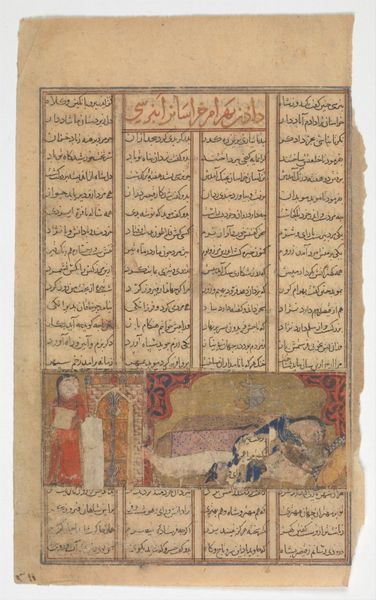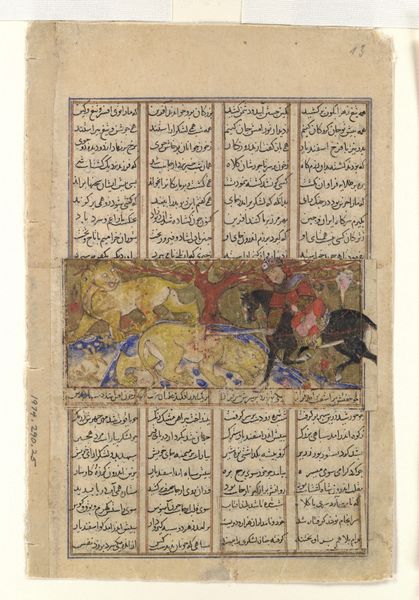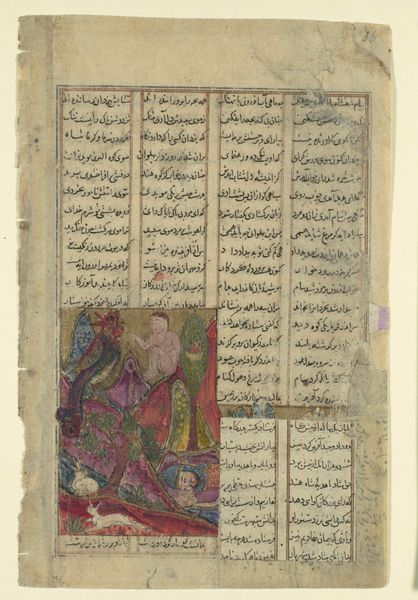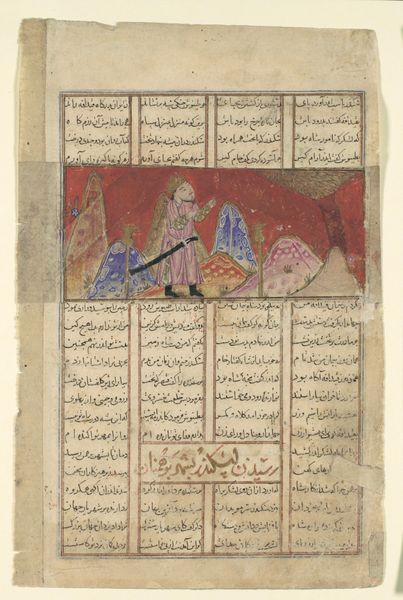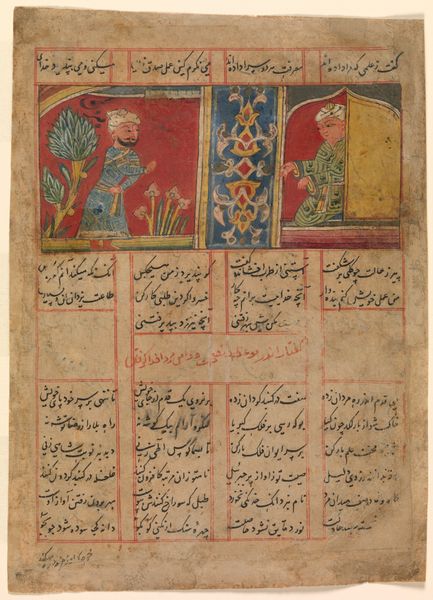
"Bizhan Slaughters the Wild Boars of Irman", Folio from a Shahnama (Book of Kings) of Firdausi 1305 - 1365
0:00
0:00
painting, paper, ink
#
medieval
#
narrative-art
#
painting
#
figuration
#
paper
#
ink
#
horse
#
men
#
islamic-art
#
miniature
#
watercolor
Dimensions: Painting: H. 1 5/8 in. (4.2 cm) W. 4 3/16 in. (10.7 cm) Page: H. 8 1/16 in. (20.5 cm) W. 5 5/16 in. (13.5 cm) Mat: H. 19 1/4 in. (48.9 cm) W. 14 1/4 in. (36.2 cm)
Copyright: Public Domain
This painting of “Bizhan Slaughters the Wild Boars of Irman”, now at the Metropolitan Museum of Art, comes from a Shahnama, or Book of Kings. Created around the 10th century by Abu'l Qasim Firdausi, the book chronicles the history of Persia in verse. This particular folio captures a heroic moment. Bizhan, a celebrated figure, is seen in vivid color, dispatching wild boars. The red backdrop isn’t just decorative; it heightens the drama, turning the scene into a theater of bravery and strength. These images played a crucial role in shaping Persian identity, reinforcing values of courage, honor, and the might of its warriors. The Shahnama wasn't just a historical record, it was a cultural touchstone, a way for people to connect with their past and find pride in their heritage. In a world where identity was constantly negotiated, stories like these provided a sense of belonging and continuity. The emotional resonance of these scenes is palpable, even centuries later. It’s a reminder of the power of art to build and sustain cultural memory.
Comments
No comments
Be the first to comment and join the conversation on the ultimate creative platform.

